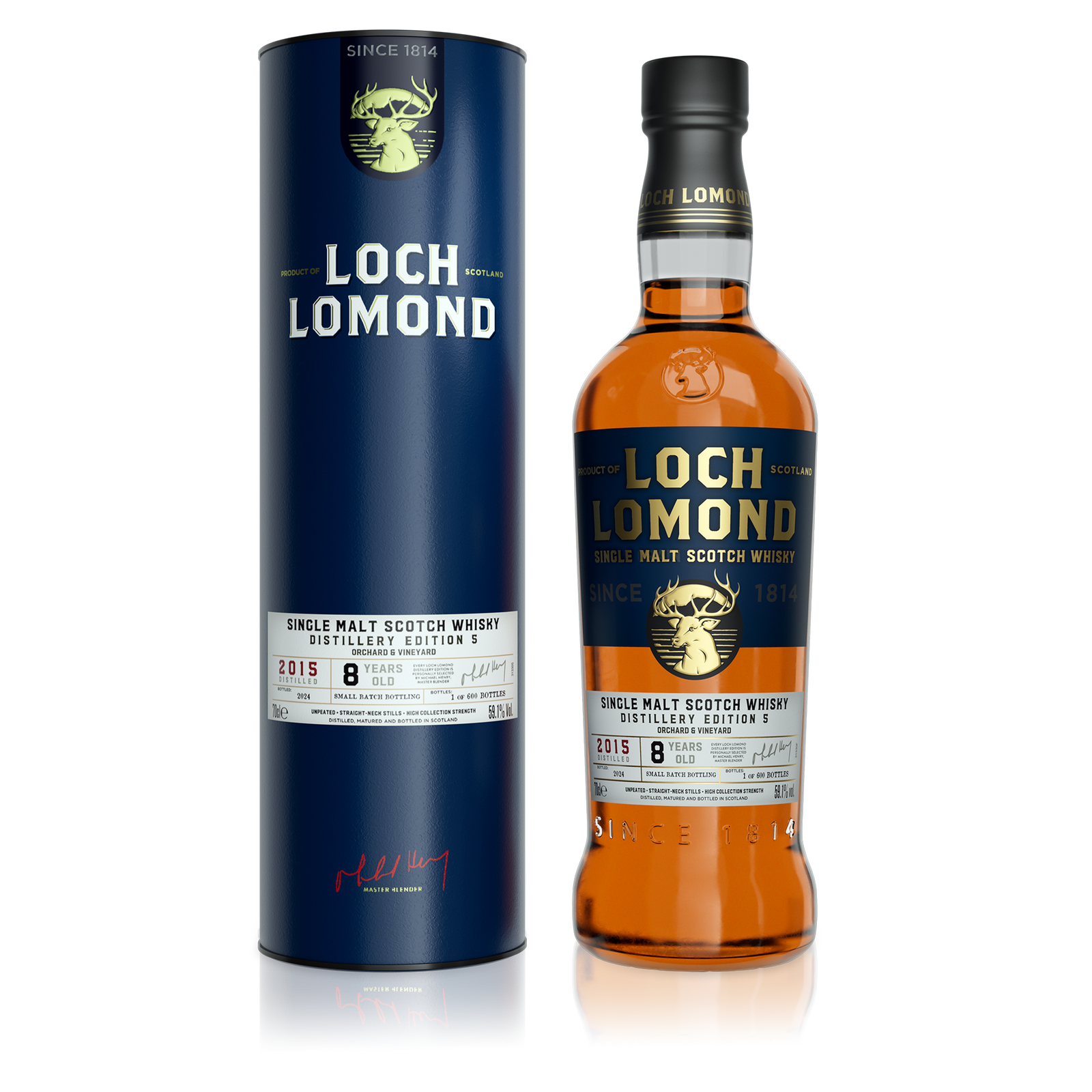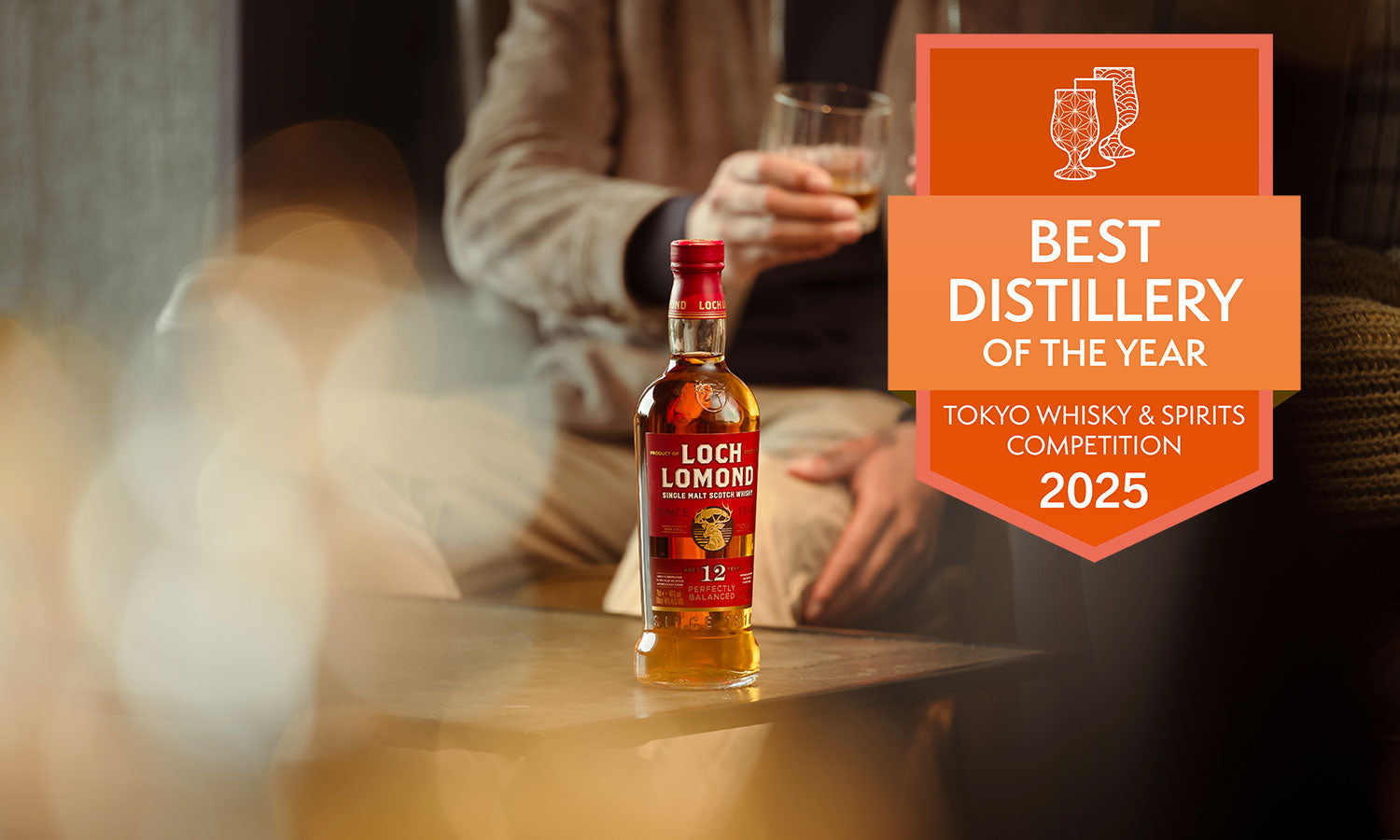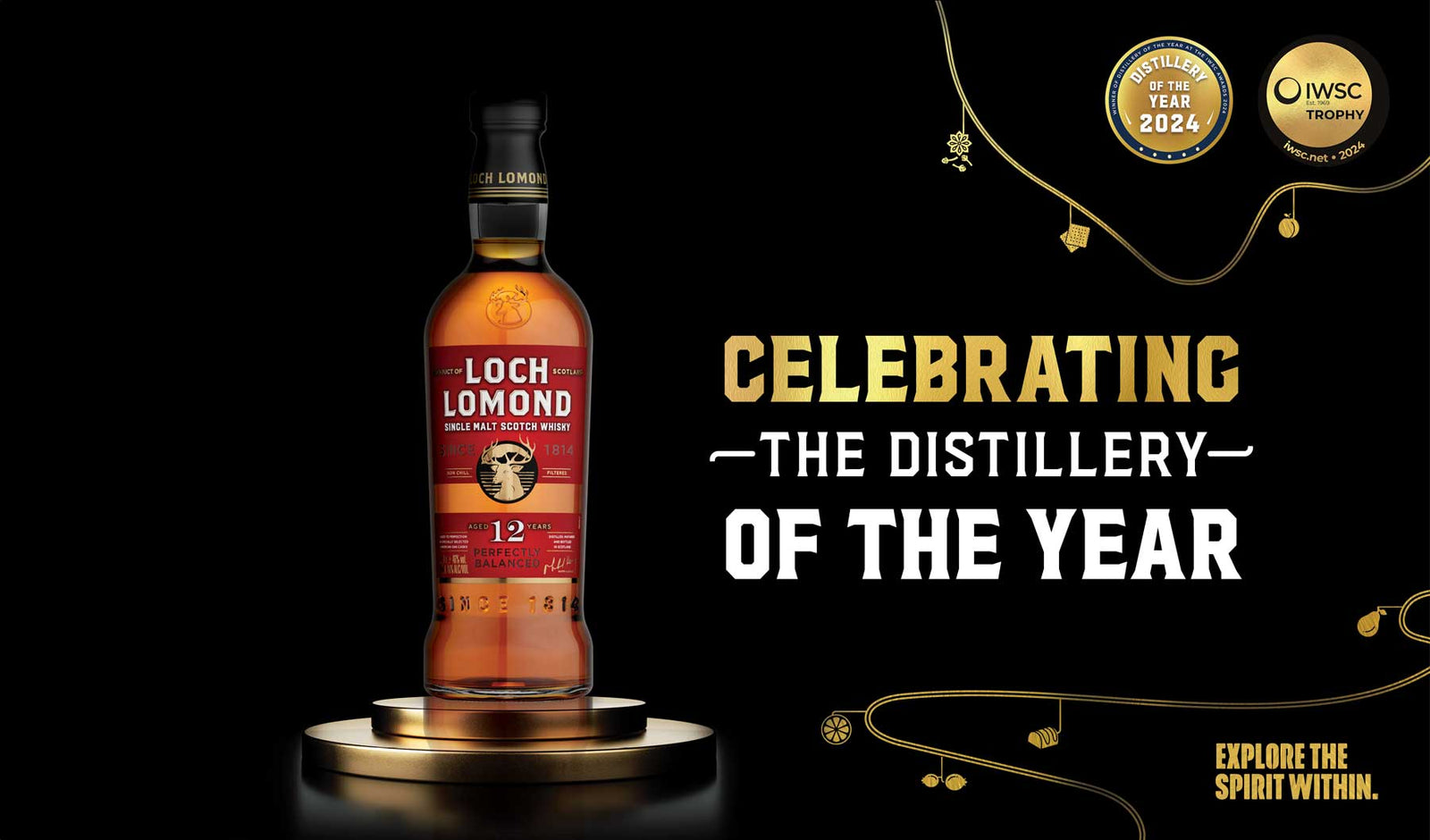Here at Loch Lomond Whiskies, we believe that whisky is more than just a drink — it’s an experience. It’s sitting by the fire on a crisp evening with good friends and family, sharing stories and ideas while enjoying rich and complex flavours.
There are a variety of flavours found in different whiskies, and this can depend on the ingredients, casks, how long it is matured, and of course, the distillery (or distilleries) behind it.
But what are the differences when it comes to single grain vs single malt vs blended whisky? We invite you to keep reading and join us on our journey of exploration into the world of whisky.
Table of Contents
Single Malt vs Single Grain vs Blended Whiskies
Let's start by defining what each of these whiskies are.
What is Single Malt Whisky?
There is a common misconception amongst whisky drinkers that a single malt whisky simply means that it comes from a single barrel. And when terms like single cask and single batch get thrown into the mix, it can be hard to keep up. To break it down:
-
‘Single’ malts are prepared traditionally and produced by a single distillery in Scotland rather than different distilleries.
-
Single ‘malt’ whisky is made only from malted barley, water, and yeast.
Requirements for Single Malt Whiskies
By law, single malt Scotch whisky has to be batch distilled in a copper pot still at a single distillery using only malted barley, water, and yeast. It then needs to be aged in oak casks in Scotland for a minimum of three years before being bottled again in Scotland. Finally, the alcohol volume must be no less than 40%.
What Makes Loch Lomond Single Malt Whisky Special?
At Loch Lomond Distillery, we use a unique combination of alchemy and engineering to enhance every step of the whisky-making process. This is what goes into our award-winning single malt whisky:
-
Ingredients: We use only 100% Scottish peated and unpeated malted barley in our milling process.
-
Fermentation: We implement an extended fermentation period (minimum of 92 hours), resulting in a fruity wash and shaping the unique flavour characteristics of our single malt whiskies.
-
Distillation: We use two types of stills to make our single malt whisky, the traditional copper pot stills and our remarkable straight neck pot stills.
-
Maturation: Our single malt matures in American Oak barrels honed by our dedicated coopers and is carefully watched over by our Master Blender Michael Henry.
For a single malt that truly embodies our distinctive style, try Loch Lomond 12 Year Old — presenting delightful hints of peach and pear complemented by layers of vanilla sweetness and concluded with a subtle touch of smoke on the finish.

What is Single Grain Whisky?
As with single malts, a single grain is also produced at a single distillery. So the difference between single malts and single grain whiskies lies in the ingredients.
A single grain whisky can be made from different grains or cereals (such as rye or corn), while a single malt can only be made from malted barley. Because of this, single grain Scotch whiskies tend to offer a sweeter taste with a lighter-body.
Single grains are also distilled in column stills, also known as Coffey stills.
Requirements for Single Grain Whiskies
For it to be defined as a single grain whisky, the whisky must be produced in copper stills in a single distillery before maturing in oak casks for a minimum of three years. Ingredients can include any combination of cereals, such as barley, rye, wheat and corn, which may be malted or unmalted. As with single malt Scotch, single grain whisky also needs to be bottled at a minimum ABV of 40%.
What Makes Loch Lomond Single Grain Whisky Special?
Loch Lomond stands on its own, there’s no doubt about it. Our single grain is artfully distilled in a continuous, or Coffey style still using only the finest 100% malted barley. And, the final result is a delectably smooth and sweet spirit with an added complexity that is rare to find in a single grain whisky.
-
Ingredients: Loch Lomond Distillery is the only distillery in Scotland that produces single grains with 100% malted barley, and our whisky stands as a pivotal exploration for whisky enthusiasts.
-
The Introduction of Peat: We are the only distillery in the world that produces a peated single grain. We offer both peated and unpeated single grain whiskies, and our peated variety is made exclusively from heavily peated malted barley at approximately 50ppm.
-
Distillation: Our continuous distillation uses the exact same wash as that which feeds the single malt stills, and this adds to the quality and flavour
. -
Maturation: Once it leaves the still, the spirit undergoes an extensive maturation in the finest oak casks from our cooperage, imparting a gentle fruity essence enriched with creamy vanilla notes and delicate wisps of smoke.
Loch Lomond Peated Single Grain is made in a continuous still with 100% malted barley and matured in Refill Bourbon Casks. You can expect a sweet tangy peat, green apple, lime citrus and aniseed flavour, and a crisp dry finish with distant peat smoke — a must try in your journey of exploring single grain Scotch.
What is Blended Whisky?
Blended whisky can be distinguished from a single malt and single grain in that it is produced by combining whiskies from differentdistilleries, rather than a single one. In this way and as the name suggests, blended Scotch whisky blends different single malts and/or grain whiskies to create a new, distinctive flavour. This blended whisky can also be aged in oak casks for a further time period.
The marriage of a single grain Scotch whisky with a single malt whisky helps to bring out hidden flavours and aromas of both. This can enhance the unique characteristics of both varieties.
Different Types of Blended Scotch Whisky Defined
There are three different types of blended whisky:
-
Blended malt Scotch whisky: Blended malt Scotch whisky used to be known as vatted malts and is a blend of single malts from two or more different distilleries.
-
Blended grain Scotch whisky: Blended grain Scotch whisky is a blend of single grain whiskies from two or more different distilleries. These blends are known for their mild and light taste.
-
Blended Scotch whisky: Remarkably popular, blended Scotch whisky is a blend of malt and grain whiskies. Loch Lomond Distillery is the only distillery in Scotland to produce all components of a blended scotch whisky at the same distillery.
Loch Lomond Signature & Loch Lomond Reserve are both premium blended whiskies, crafted using both malt from our Straight Neck and swan neck stills and grain from our on site column still, with Reserve being aged in recharred American Oak casks and Signature is matured and married in our 600 cask Solera, combining Oloroso and recharred American Oak casks.
Explore an exclusive selection from Loch Lomond Whiskies — Order online for free express delivery in the UK on all orders over £50.

Loch Lomond Whiskies: Elegance Distilled in Every Drop
At Loch Lomond Distillery, expertise and passion instill itself in our whisky in a way that can’t be replicated anywhere else in the world. Loch Lomond Distillery has roots tracing back to 1772 with the establishment of the Littlemill Distillery, a pivotal landmark in Scotch whisky history as the oldest licensed distillery in the nation. Today, Loch Lomond Distillery is ascending to new heights. We take immense pride in our award-winning range of whiskies, our innovative distillery operations, and the dedicated team of experts who make it all possible.
Our Signature Style
Our diverse distillery allows us to explore and control the whisky-making process from start to finish, and this shines through when you take your first sip of our whisky.
We are continuously crafting expressions that intrigue and delight. We don’t follow the crowd and, driven by curiosity, we have built a uniquely diverse and capable distillery that produces an eclectic selection of distinctive single malts and single grains of exceptional range and depth.
The Loch Lomond signature style is evident across our selection — boasting fruit character, sweet honey and citrus notes with a gentle hint of smoke on the finish.
Crafted Excellence from our Cooperage
The cooperage at Loch Lomond is more than just a functional space; it's a testament to the distillery's commitment to craftsmanship and quality.
The Loch Lomond cooperage was opened in 1994 and is pivotal to maintaining the high quality of our whiskies. Loch Lomond is one of only four distilleries in Scotland that has their cooperage on site, and our unwavering commitment to quality means that barrel repairs and charring are carried out to an exacting standard so that every cask is perfect.
A Journey for the Palate in Every Dram
By using straight neck and traditional swan neck stills, different cut points, and peated and unpeated malted barley, we can distil 8 different single malt styles. This provides an extensive range of taste profiles for a single malt distillery.
A great way to explore our diverse range is through our trio of our 12 Year Old Single Malts:
-
Loch Lomond Perfectly Balanced Single Malt Whisky is a perfect representation of our distillery's signature style, delivering delicious notes of peach and pear, layered with vanilla sweetness and a gentle hint of smoke on the finish.
-
Loch Lomond Inchmurrin Single Malt Whisky represents our exploration of the fruit aspect of our signature style. Intense orchard fruit flavours explode through a combination of our long fermentation and the use of our unique straight neck stills.
-
Loch Lomond Inchmoan 12 Year Old Single Malt Whisky is expertly distilled in straight neck and traditional pot stills to create a bottled taste sensation of sweet, medicinal peat and rich bacon on top of soft peach and pear. You’ll notice a touch of spiciness combined with green apple, peach and pear as the fruit character develops.
Single Grain vs Single Malt vs Blended Whisky: A Quick Summary
Need a quick recap of the definitions of blended vs single malt and single grain Scotch whiskies? We’ve summarised these key whisky varieties below for a snapshot overview of the key differences.
Single Malt Scotch Whisky
-
This is a whisky that is produced in Scotland by a single distillery using only a copper pot still.
-
By law, single malt Scotch must mature in oak casks in Scotland for at least three years.
-
The alcohol volume must be no less than 40%, and it must be bottled in Scotland.
-
Single malt Scotch can only be made using malted barley, yeast, and water.
-
Single malt whiskies can offer a variety of flavours, ranging from oaky to sweet, fruity to smoky, and beyond — all depending on the distillery.
Single Grain Scotch Whisky
-
This is a whisky which is produced by a single distillery in Scotland using any kind of copper still.
-
Single grain whisky can be made using malted or unmalted barley, wheat, corn, rye, or any combination thereof.
-
It must be matured in an oak barrel for a minimum of three years.
-
Single grain whiskies are generally lighter-bodied and sweeter.
Blended Whiskies
-
Blended Scotch whisky can be a blend of one or more whiskies from different distilleries that fit under the categories of single malt Scotch whiskies or single grain Scotch whiskies.
-
Blends can be made exclusively from single grains or single malts, or a combination of the two.
Has your newfound understanding of the difference between single grain and single malt whisky got you ready to explore the spirit within? Order online from Loch Lomond Whiskies today — We include free express delivery on all orders over £50.





